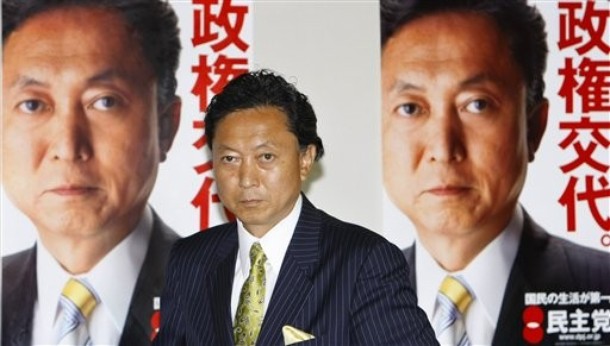Another could be substantive: the DPJ’s stated objectives suggest significant shifts in both Japan’s domestic policies and its external relations, especially with the US and the rest of Asia.
Japan now stands a better chance of becoming a two-party system, with real political competition, than at any time since its first election in 1890.
The economic crisis that has plagued Japan for two decades has allowed the DPJ to grow into a viable alternative to LDP rule. The DPJ has real potential to be different. And with its landslide victory, it enjoys the backing of a vast range of constituencies, including traditional supporters of the LDP.
A more vibrant democracy at home would allow Japan to become a more active ally to the democracies that have constituted the liberal international order since the end of World War II.
The DPJ will face both structural constraints and internal tensions, which could prove crippling on some issues. Broadly, the DPJ wants to limit the bureaucracy’s control of state organs and resources.
The DPJ also proposes to overcome the false choice between favouring the United States and favouring Asia by building trust with both simultaneously. Nonetheless, managing good relations with the United States and China at the same time will require skillful diplomacy on the part of Tokyo.
The DPJ has an historic opportunity to change Japanese politics. Can it live up to it?
In the 1990s, the asset-inflated economy collapsed, triggering a period, now known as Japan’s ‘lost decade’, of bank failures, one per cent annual growth rates, and economic stagnation. The LDP government responded with inept economic policies, disappointing the public.
Today, Japan faces several acute problems, among them a shrinking population, the collapse of agriculture, few prospects for young adults, and the erosion of the middle class. The DPJ’s recent rise has coincided with this low point, and the party claims to offer an alternative to the LDP’s disappointing record. The party hopes to tackle issues that fell through the cracks under the LDP and is far more ambitious. For example, the party is proposing to reduce Japan’s carbon emissions from 1990 levels by 25 per cent by 2020 – compared with the LDP’s proposed eight per cent.
Nevertheless, the DPJ’s ill-defined nature makes its platform vulnerable to confusion. For example, the party’s foreign policy program reflects Japan’s desire for a new identity in the twenty-first century, but its proposals about how to achieve that vision are vague, and the party is divided over implementation. Perhaps the reason why only five of the 55 sections in the DPJ’s election manifesto concerned foreign policy, and most of those contained only vague proposals was to present a united front.
The DPJ’s vision for how to build an institutional architecture for East Asia is ambiguous. How does the party hope to involve the United States in this community? Will Japan’s traditional endorsement of ‘open regionalism,’ a call for integration in the Asia Pacific region enshrined in the principles of the Asia Pacific Economic Cooperation, hold? The DPJ’s manifesto states that ‘North Korea must not be permitted to possess nuclear weapons’ but offers no specific policy for denuclearising it.
Having long defined its proposals in opposition to the policies of the ruling party, the DPJ has developed a foreign policy platform that excludes many opinions within the party and yet is difficult to pin down.
Hatoyama has argued for establishing a regional currency union in East Asia, arguing that it is time to get past the Bretton Woods system. Ichiro Ozawa, the party’s new general secretary and the main architect of the party’s victory, has long supported the Chinese-Japanese strategic partnership, and the Chinese leadership has responded well to his overtures. The DPJ is also interested in tightening relations with South Korea, the first country Hatoyama visited after becoming party president in the spring.
To improve Japan’s relations with its neighbours, the DPJ believes in being transparent about the legacy of the country’s imperialism in the first half of the twentieth century. The party has criticized former Prime Minister Koizumi’s visits to the Yasukuni Shrine, and has proposed the construction of a secular memorial.
On many other foreign policy questions, the DPJ is at once ambitious and vague. It supports free trade: it has announced plans to conclude talks on a free-trade agreement with South Korea and has promoted a similar agreement between Japan and the United States. But it is unclear how the party plans to push such agreements through, especially given the considerable resistance of farming.
Before last year’s watershed vote, the only time since World War II that Japan was not run by the LDP was during the maverick Morihiro Hosokawa’s brief tenure as prime minister, from late 1993 to early 1994. Hosokawa’s biggest mistake was rising to power by advocating political reform but then, once in office, following traditional policies for fear that voters were not ready for real change. In fact, the Japanese needed and wanted change then. And they do now. The DPJ must not repeat Hosokawa’s mistake. It must display strong and innovative leadership and provide a genuine alternative to the LDP’s rule.
This is part of the special feature: 2009 in review and the year ahead.
Yoichi Funabashi is Editor-in-Chief of the Asahi Shimbun in Tokyo. A longer version of this essay was published in ‘Foreign Affairs’.

